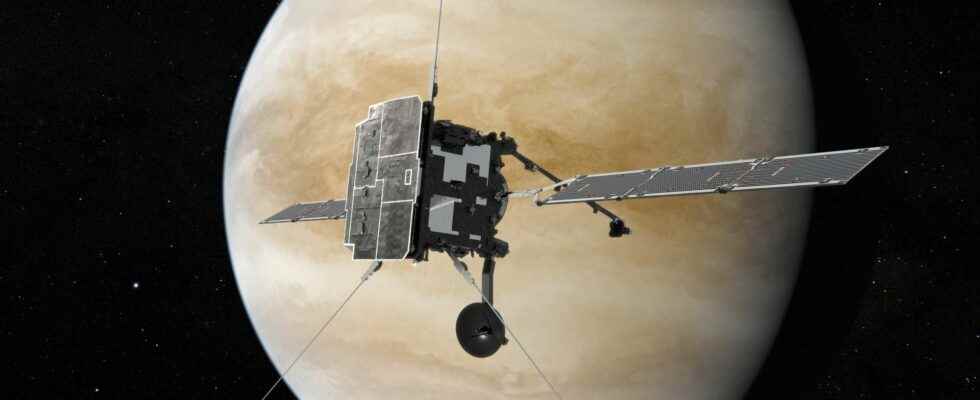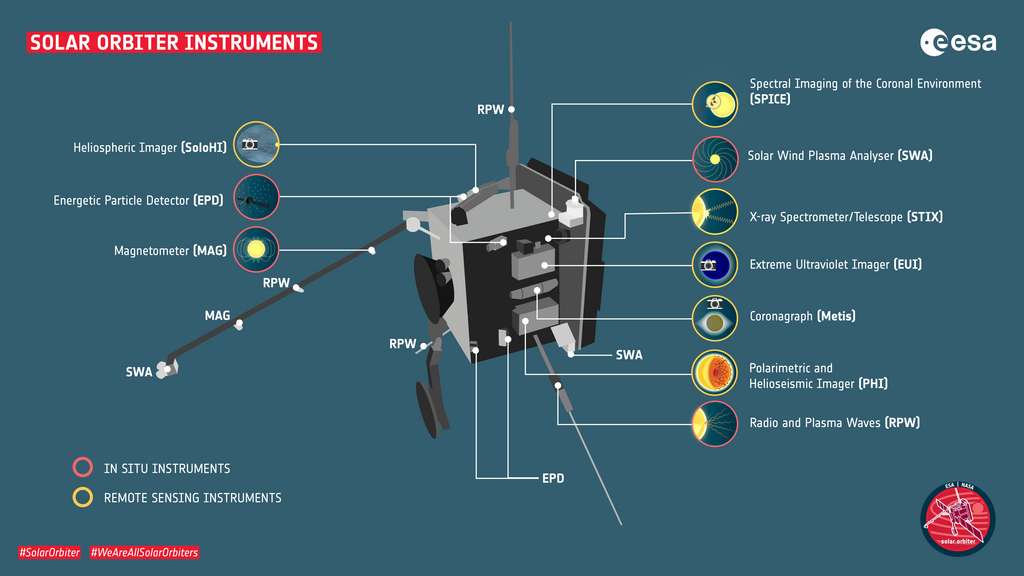Solar Orbiter performed a new flyby of Venus overnight from Saturday to Sunday at 3:26 a.m. Paris time. The European Space Agency’s probe is on its way to study the Sun very closely. To place itself in an orbit passing above the poles of our Star, Solar Orbiter uses Venus as a gravitational assistance… and takes the opportunity to do a little “bonus science”.
You will also be interested
[EN VIDÉO] Solar Orbiter offers different views of a coronal mass ejection Coronal mass ejections (CMEs) are violent phenomena. And on February 12 and 13, 2021, three instruments from the Solar Orbiter mission — a NASA and European Space Agency (ESA) mission — captured one of them for the first time, both on closer and wider views. The Extreme Ultraviolet Imager (EUI) first allows to discover the inner part of the solar corona. The Metis coronagraph, by blocking light from the Sun’s surface, then provides a view of the outer corona. Finally, the Solar Orbiter Heliospheric Imager (SoloHI) shows the solar wind by capturing the light scattered by its electrons. © Solar Orbiter/ Team EUI/ Team Metis/ Team SoloHI/ ESA & NASA
Solar Orbiter took off from Earth in 2020. It’s not long to make the trip from theorbit from Earth to an orbit closer to the Sun. As a reminder, our Star is only 150 million kilometers from us (eight light minutes). On the other hand, it is much more complicated to get into an orbit heliocentric polar.
One of the main tasks of Solar Orbiter is to learn more about her fabulous magnetic field. The ideal for this is to make measurements also above the magnetic poleswhich are roughly confused with the geographical poles of the earth. The problem is accessing it.
Since all the stars of our Solar system lie approximately on the same plane (the plane of the ecliptic), it is easy for a probe to evolve on this same plane. But, to get into polar orbit around the Sun, you have to gradually increase the inclination of the orbit. To avoid consuming too much fuel, theESA decided to do it gradually using thegravity assist of Venus. the overview of saturday is only the third out of eight !
A bit of science as a bonus
The time to make the trip to the heliocentric polar orbit is long, but it is not wasted. Solar Orbiter has already made flybys of the Sun among the closest in the history of the conquest of space. A future overview perihelion is moreover intended on October 13 and should again break a new record by passing nearly 43 million km from the surface.
Last Saturday, Solar Orbiter passed 6,400 km from Venus and took the opportunity to study the magnetic field of our neighboring planet, in particular the region where this field interacts with the solar wind. Indeed, unlike our magnetic field which is produced by the convection movements of metals at the heart of our Planet, that of Venus is generated by the interaction between the solar wind and the thick atmosphere of the planet.
Interested in what you just read?

